

Highlighted are national and international student award winners from across UD. We salute their excellence!
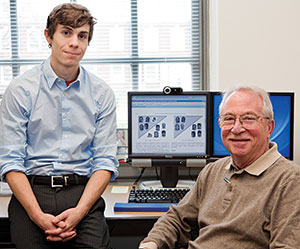
Previous studies have found that a person is more likely to recognize a photo of a face as familiar if that person belongs to the same racial group as the one in the picture. But now, a UD graduate student says other "same-group" characteristics influence recognition and can be just as important as racial identification.
That finding earned Eric Hehman, a doctoral student in the Department of Psychology, the Psi Chi/American Psychological Association's Edwin B. Newman Graduate Research Award for his work exploring what characteristics of a person cause others to remember or forget having seen his face before. The research was published in the Journal of Experimental Social Psychology.
"We found that white students [participating in the research] recognized white faces better than they did black faces," Hehman said. "But when we identified the faces as either University of Delaware students or James Madison University students, the UD students recognized other UD students better than the JMU students, regardless of their race."
Previous such studies indicated that "you can't overcome the racial distinctions" that people make, Hehman said, but his research contradicts that.
Hehman showed UD undergraduates 40 photos of faces — displayed eight at a time on a computer screen — and told them they'd be asked later if they recognized them. After a break, they were shown numerous faces one at a time and asked to identify each as one they had seen before or one that did not seem familiar.
When the photos were grouped by race, that characteristic played a significant role in recognition, but when they were grouped by university affiliation, that affiliation became key. Hehman said the psychological mechanism that causes differences in whether a face is recognized is unknown, but he suspects that people remember those who belong to their own group because those people seem more likely to affect or interact with them
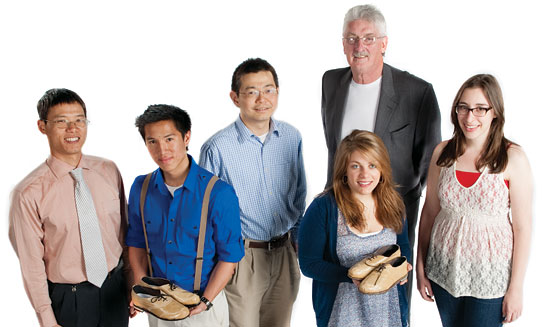
Chicken feather fibers and soybean polymers lie at the heart and "sole" of the prototype eco-shoes developed by a UD undergraduate research team. The team's innovative eco-friendly clothing and footwear earned the 2011 Youth Council on Sustainable Science and Technology (YCOSST) P3 design award given by the American Institute of Chemical Engineers' (AIChE) Institute for Sustainability.
The team included Paula Bonanno, Jillian Kramer and Stacey Lipschitz from fashion and apparel studies — all University Honors Program students — and Quan Dan from chemical engineering.
Huantian Cao, associate professor in fashion and apparel studies, and Richard P. Wool, chemical engineering professor and director of the Affordable Composites from Renewable Sources (ACRES) program at UD, advised the group with help from chemical engineering graduate student Mingjiang Zhan.
While interdisciplinary work between chemical engineering and fashion might seem like a stretch, Wool said it is potentially the most beneficial ACRES collaboration to date.
"Using biobased foam in place of toxic polyurethanes couldrevolutionize the high-polluting leather industry. It could also lead to new multidisciplinary graduate degrees between chemical engineering and fashion," he said.
The project is funded by the U.S. Environmental Protection Agency's P3 program, a national student design competition for sustainability focusing on people, prosperity and the planet.
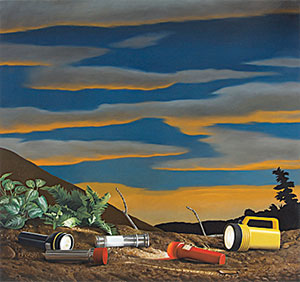
Dan Jackson, who graduated this past May with a master of fine arts degree, was selected to receive a highly competitive annual grant from the Joan Mitchell Foundation.
From an invited nomination process of 125 nominees, only 15 graduating painters nationwide receive the MFA Grant.
"Not only is this a feather in the cap of the art department to have been invited to nominate someone, but it is a tremendous achievement for our student to win," says Joann Browning, associate dean for the arts.
The MFA Grant was established by the Joan Mitchell Foundation in 1997 "to help MFA painters and sculptors in furthering their artistic careers and to aid in the transition from academic to professional studio work upon graduation."
The grants are given in recognition of artistic quality to artists chosen from a body of candidates put forth by nominators from the academic art community across the United States.
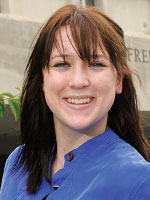
Four UD students were selected to receive grants from the highly competitive Fulbright Program that will support their education at overseas institutions. They include graduate students Adrienne Harding in music, Devin Wardell in fashion and apparel studies, and Corinne Weidinger in art history, and undergraduate Kimberly Stevenson in biological sciences.
Stevenson will attend the University of St. Andrews in Scotland to pursue a master of research in medicine degree and to work with orthopedic surgeon James Robb and Prof. Peter Donnelly, studying hip dislocation prevention and treatment in children with cerebral palsy (CP).
"Having the rare chance to work with a renowned orthopedic surgeon on work so important to me is once-in-a-lifetime," said Stevenson, who will enter medical school at Georgetown University in 2012. A student in the University Honors Program, her undergraduate research at UD focused on orthopedic issues seen in children with CP. The work means so much to her, she said, because her younger sister has CP.
Harding, a supplemental faculty member who earned bachelor's and master's degrees in music as a flute performance major at UD, will continue her studies in Austria. In an interdisciplinary project combining her experience as a professional musician and her ballroom dance training, she will study the implications of 18th-century social dance as it pertains to musical pedagogy.
Wardell is pursing the Department of Fashion and Apparel Studies' graduate certificate in Socially Responsible and Sustainable Apparel Business, which addresses labor and environmental problems in the global supply chains for the apparel, textile and footwear industries. She will travel to India to partner with a professor at the National Institute of Fashion Technology in New Delhi on research on handcraft development projects there, with special emphasis on handloom weaving.
Weidinger received a nine-month grant to conduct research in Belgium for her doctoral dissertation, "Labor, Technology and the Body: Representing Mine and Factory Work in Wallonia, 1880–1905." It examines works of art by Belgian artist Constantin Meunier and French painter Maximillien Luce depicting miners, factory workers and industrial landscapes in Wallonia, the southern, French-speaking region of Belgium.
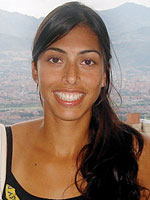
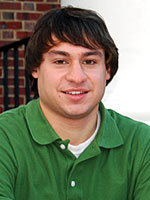
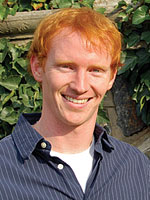
Three UD graduate students received the Science, Mathematics and Research for Transformation (SMART) Scholarship from the Department of Defense. It provides full tuition, a cash award and employment placement after graduation.
Growing up in Medellin, Colombia, Cristina Fernandez loved to collect rocks. The master's student in geological sciences is set to graduate in spring 2012 and then will begin work as a scientist with the Army Geospatial Center in Alexandria, Va. Joining the center's Hydrologic and Environmental Analysis branch, Fernandez will help supply water resource and geospatial information to the Army and Department of Defense.
The placement not only utilizes her geology skills, it also complements her six-year experience as a sergeant in the Army. Having been deployed to Kuwait in 2004–2005, she said she can identify with the troops she'll be supporting.
Matthew Puterio already has considerable experience working at his SMART placement facility, the Naval Undersea Warfare Center in Newport, R.I., first as a high schooler building a miniature submarine at the facility's summer camp, and then as a warfare center intern during winter and summer breaks since his freshman year. The computer engineering major from Kingston, R.I., said he hopes to get involved with software development as his career progresses.
Joseph Senne, a doctoral student in UD's Physical Ocean Science and Engineering Program, studies how water waves and bubbles on the ocean's surface affect sound waves moving through the sub-surface. The Mobile, Ala., native works at the Ocean Acoustics Laboratory, where understanding the physics of acoustics and surface water-wave interactions is leading to improved underwater communication systems for unmanned research vehicles. After graduating in January 2012, he will head to the Naval Oceanographic Office at Stennis Space Center in south Mississippi.
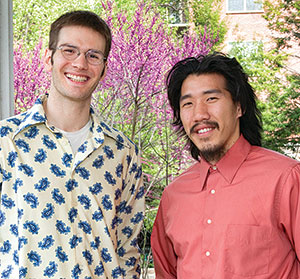
Timothy Edward Kilpatrick and Joey D. Kim won prestigious Goldwater scholarships to support their studies in biochemistry and chemical engineering, respectively.
The scholarship program, honoring the late U.S. Sen. Barry Goldwater from Arizona, encourages outstanding students to pursue careers in math, the natural sciences and engineering. It covers the cost of tuition, fees, books, and room and board up to $7,500 per year.
A student in the University Honors Program, Gilpatrick, from Nashua, N.H., learned of his recognition as a Goldwater Scholar during spring break while preparing buffer solutions in a Drake Hall lab. "My reaction was one of somber gratitude and joy, which may have included a small dance," he said.
Receiving the scholarship, he said, has "encouraged me to remain focused and to continue through the challenges of my education."
Gilpatrick's professional goal is to conduct research and teach at an academic medical center. His research interest is in analyzing signaling pathways of the immune system, which he said "has many applications, including vaccine development and the treatment of autoimmune diseases."
When he received the email notifying him of his selection for the scholarship, Kim said he "was struck with such an indescribable and incomprehensible emotion that I didn't know what else to do other than get on my knees and begin worshiping God with all that I am."
To Kim, who is from Irvine, Calif., being named a Goldwater Scholar "is a representation of the first major step toward achieving my career goals." He plans to earn a doctorate in renewable energy and become a research professor at a university "to have direct impact on both the future generation of engineers and the world of science."